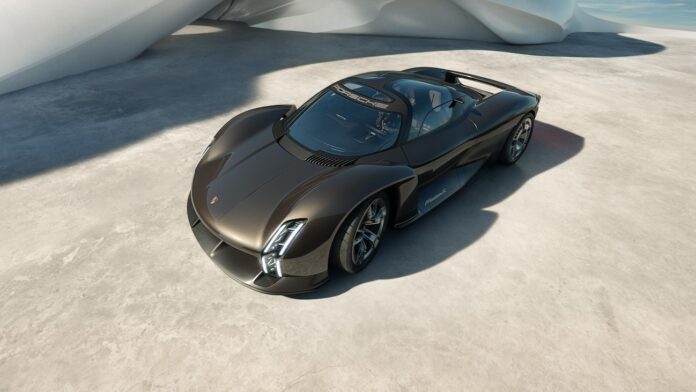In the world of hypercars, Porsche has just unleashed its latest beast, the Mission X, and it’s poised to redefine what we know about road-legal performance. This hypercar, dubbed the successor to the iconic 918 Spyder and the legendary Carrera GT, has a singular mission: to break the Nurburgring lap record. Yes, you heard it right; Porsche is aiming to dethrone the AMG One, a car that’s essentially a Formula One with a roof and an extra seat.
The Genesis: A Tribute to Porsche’s Legacy
The Mission X is not Porsche’s first attempt at a hypercar since the 918 Spyder. Some might recall the 919 Street concept, a road-going version of the 919 prototype that raced at Le Mans until 2017. Porsche kept the lid on this project until 2020, revealing it alongside the celebration of Porsche’s 75th anniversary. Thus, the Mission X was born, a concept car with whispers of a potential leap into production.
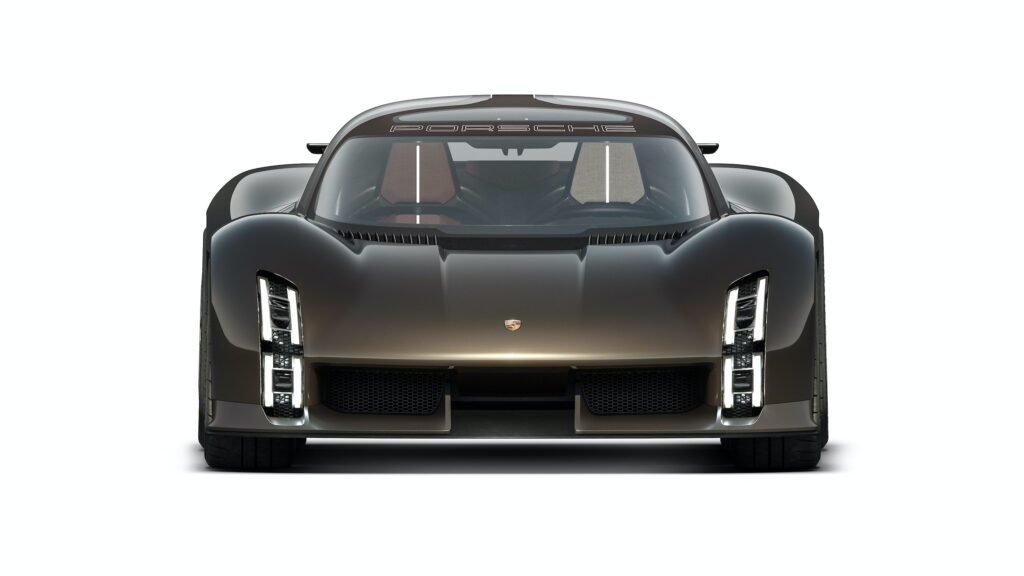
Design Beyond the Ordinary
Now, let’s talk aesthetics. The Mission X is not just a cosmetic makeover of its predecessors; it’s a ground-up design that demands attention. The headlights, a departure from Porsche’s usual round lamps, feature four vertical bars on each side, reminiscent of the 963 racing car flipped by 90 degrees. Viewed from the side, it’s a low, long, and aerodynamic spectacle, with retro-style wheels adorned with aero covers, a nod to the old Porsche Group C cars.
The rear of the Mission X is a testament to aerodynamic mastery. Forget massive rear wings; Porsche opted for a gigantic diffuser, spanning almost the entire rear bodywork. This design choice enables the Mission X to generate more downforce than a 911 GT3 RS, a car famed for its aerodynamics. Interestingly, Porsche aimed for subtlety, a departure from the aggressive look synonymous with hypercars.
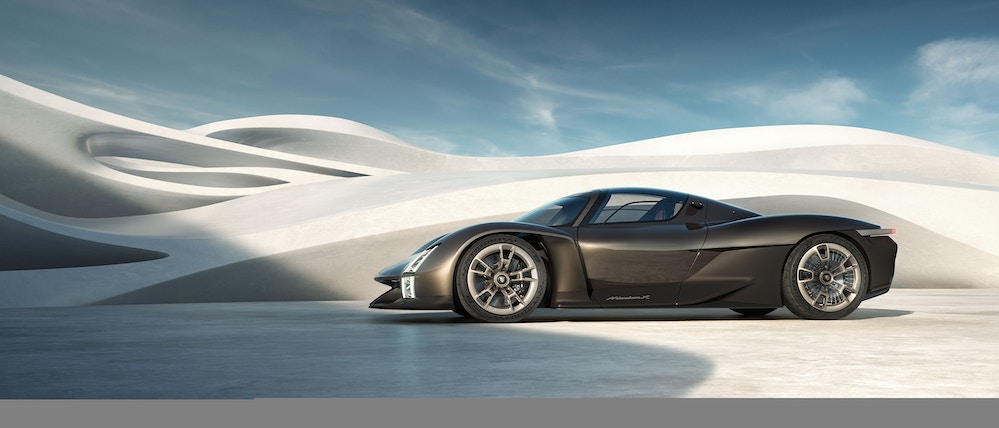
Inside the Cockpit: A Symphony of Technology and Quirk
While the exterior screams sophistication, the interior has a touch of eccentricity. In a prototype, Porsche decided to go for two-tone seats in white and brown, giving the driver’s seat an uncanny resemblance to an ice cream cone. The white steering wheel might raise some eyebrows, suggesting a potential struggle with grubbiness unless driving gloves become a constant companion. However, the steering wheel itself is a masterpiece, making the yoke in a Tesla Model S Plaid seem antiquated.
Yet, amidst this modernity, Porsche introduces an analog stopwatch on the dashboard, a nod to tradition. For the passenger, a full digital display packed with lap time information promises engagement while hurtling around the Nurburgring.
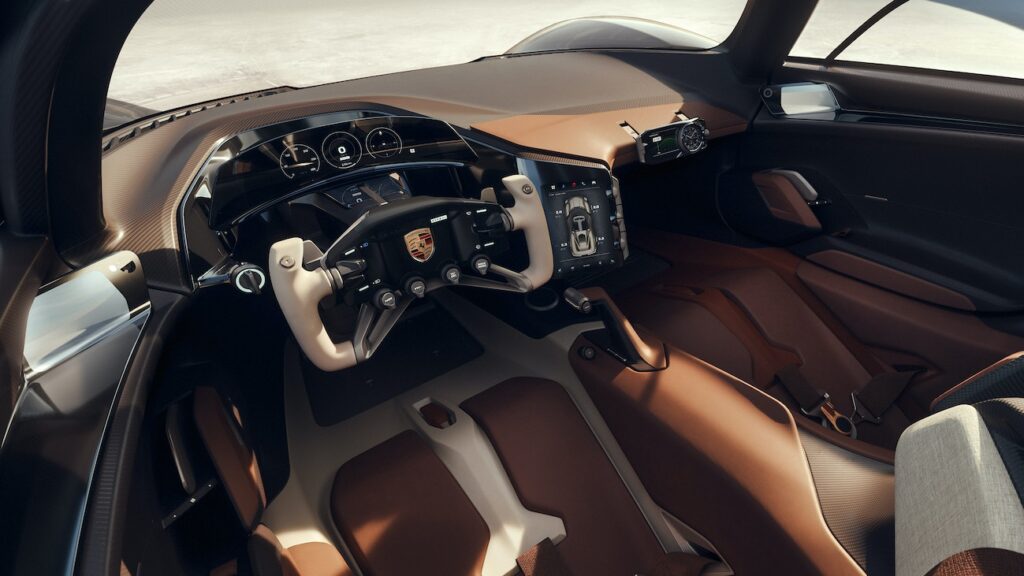
Performance Targets: Chasing the Nurburgring Crown
Porsche doesn’t just promise; it lays down the gauntlet. The Mission X has its sights set on the Nurburgring lap record for road-legal cars, currently held by the Mercedes AMG One. Clocking at 6 minutes 35.183 seconds, the AMG One is a track beast, equipped with a 1.6-liter turbocharged V6 engine reminiscent of a 2015 Formula One car, accompanied by four electric motors.
Unlike its competitors, Porsche takes a unique approach. The Mission X is not a hybrid; it’s an all-electric hypercar. Bucking the trend, Porsche aims to prove that electric vehicles can be as potent on the track as their hybrid counterparts. The AMG One’s record is a tough nut to crack, but with Porsche’s history of pushing boundaries, it’s a challenge they embrace.
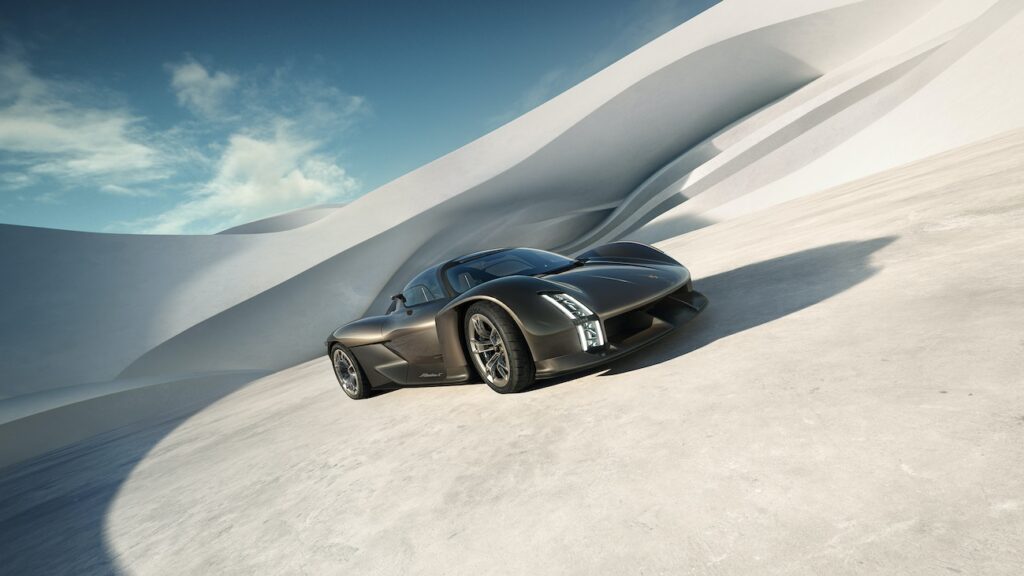
Electric Revolution: Unleashing 1000 Horsepower Per Ton
Here’s where things get electrifying. While Porsche hasn’t disclosed the exact power figure, they boast a staggering power-to-weight ratio of about 1000 horsepower per ton. To put this in perspective, the Porsche 918 Spyder with the Weissach package has a power-to-weight ratio of 543 horsepower per ton. The AMG One, with its 1063 horsepower, lags behind at 627 horsepower per ton.
This ambitious figure puts the Mission X in an elite league, competing with hypercars designed for top speed records rather than Nurburgring domination. The Bugatti Chiron Supersport 300 Plus and the Koenigsegg Jesko are among the contenders, but neither has a specific focus on track records.
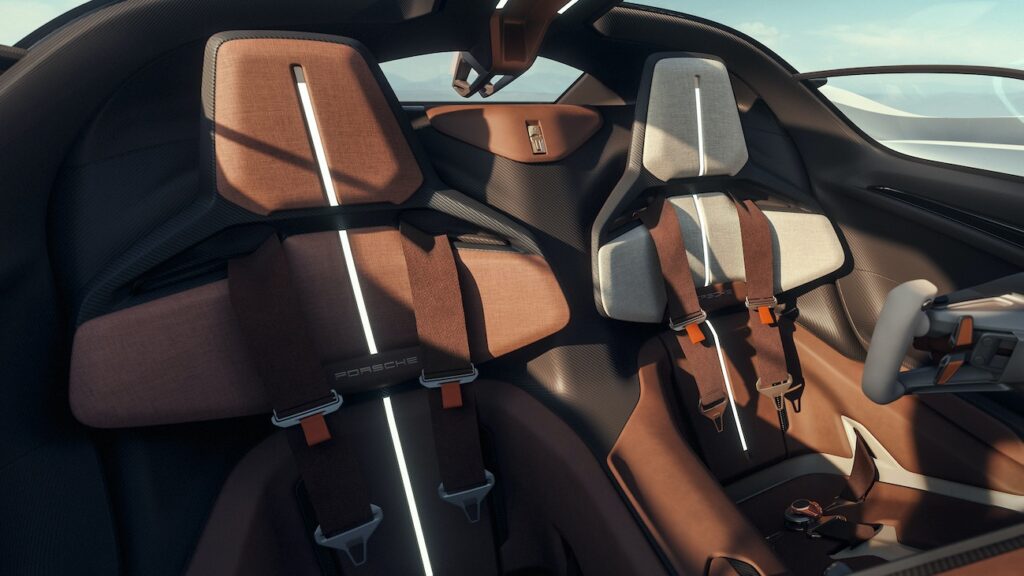
The Bugatti Challenge: A Worthy Adversary
Speaking of contenders, the Bugatti Bolide emerges as a potential adversary. With a power-to-weight ratio of 1103 horsepower per ton, the Bolide matches the Mission X. However, Porsche holds a crucial advantage — the Mission X is road-legal. In contrast, the Bolide, despite its incredible specs, won’t be prowling the streets.
Road-Legal Prowess: Beyond the Track
Porsche emphasizes that the Mission X isn’t a garage queen destined for the track alone. It’s designed to be road-legal, adding practicality to the performance. Moreover, Porsche hints at a 900-volt charging capacity, promising quicker charging times. If the Mission X sees production, it could be more accessible than the exclusive Bugatti Bolide, of which only 40 units will be produced.
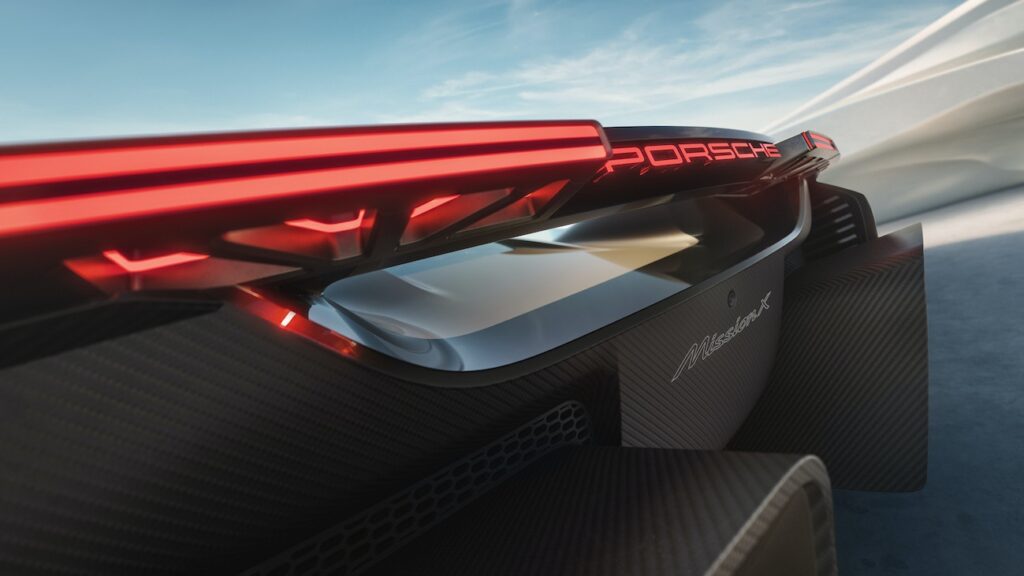
A Bold Leap into the Future
In the hypercar arena, where every manufacturer aims for supremacy, Porsche takes a bold leap into the future with the Mission X. It’s not just a showcase of speed; it’s a statement on the capabilities of electric hypercars. The Nurburgring record is the battleground, and Porsche, with its legacy of innovation, is ready for the challenge.
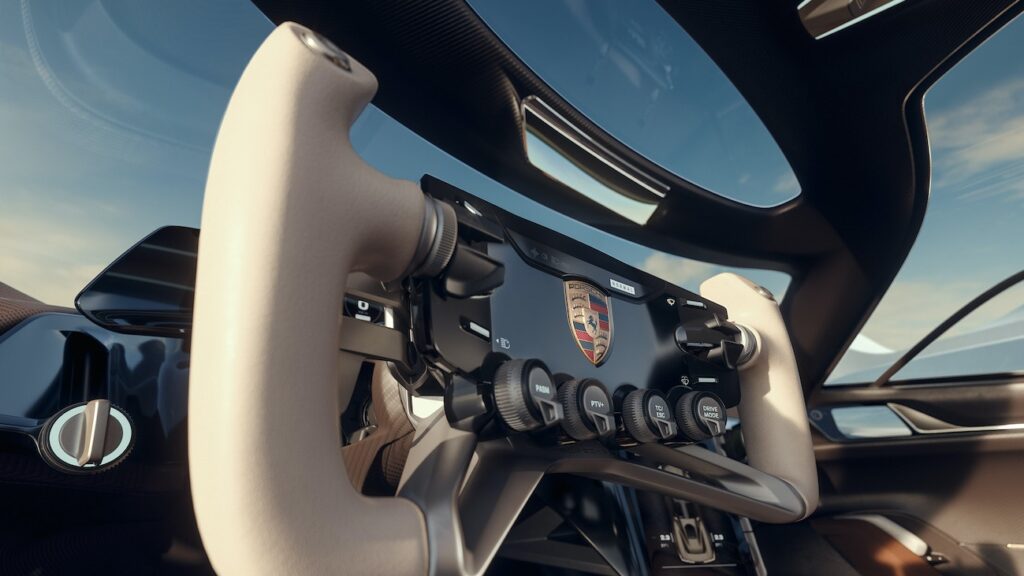
FAQs: Porsche Mission X
- Is the Mission X already in production?
- As of now, it’s labeled as a concept car, but Porsche hints at the possibility of production, unlike the 919 Street, which remained a concept.
- How does the Mission X differ from its predecessor, the 918 Spyder?
- While the 918 Spyder was a hybrid, the Mission X is an all-electric hypercar, boasting a remarkable power-to-weight ratio.
- Can the Mission X be used for everyday driving?
- Absolutely. Porsche envisions the Mission X as a road-legal hypercar, making it not just a track monster but a practical high-performance vehicle.
- What sets the Mission X apart from other hypercars targeting Nurburgring records?
- The Mission X stands out by being an all-electric hypercar, challenging the conventional belief that hybrid setups are necessary for top-notch track performance.
- How does the Mission X compare to other hypercars like the Bugatti Bolide?
- The Mission X and Bugatti Bolide share a similar power-to-weight ratio, but the Mission X has the edge of being road-legal, making it a more versatile option for enthusiasts.



